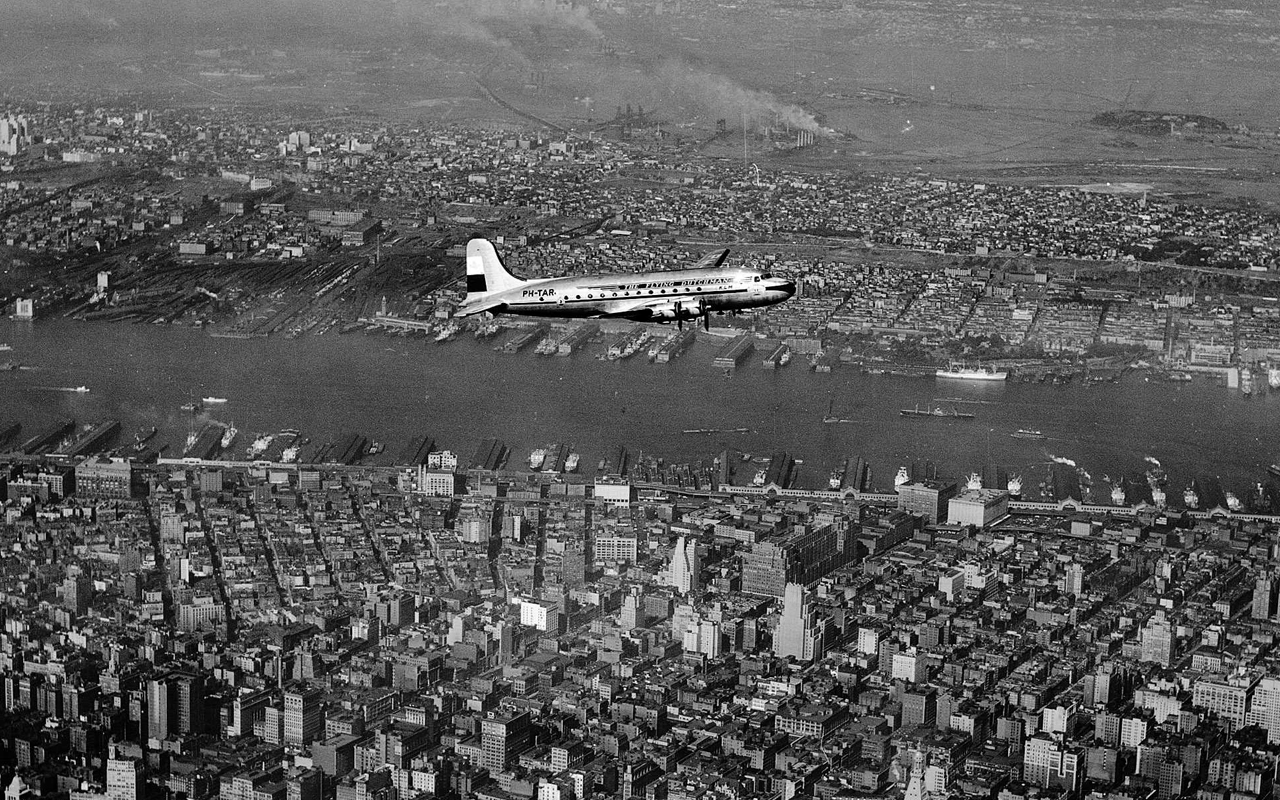In the 1920s and 1930s, KLM already pioneered flights to the former Dutch East Indies. The Amsterdam-Batavia route, started in 1929, was the world’s longest scheduled service for many years. The first transatlantic flight followed in 1934, from Amsterdam to Curaçao via Suriname. The long-haul flights operated by KLM made countless stops along the way, but only had overseas territories of the Kingdom of the Netherlands as their final destination.
It was therefore a long-cherished wish of KLM founder Albert Plesman to build a truly intercontinental route network. During the Second World War, which Plesman was forced to spend as an ‘exile’ in Twente by the German occupier, he was working on plans for a reconstruction of KLM.
As soon as the war ended, Plesman traveled to the United States. There he not only met with President Truman, but also managed to extract a large number of four-engine DC-4s (C-54s) ‘Skymasters’. The most modern pre-war aircraft, the twin-engine DC-3, was not well suited for long flights over the Atlantic.
The vigorous Plesman’s lobbying in Washington and the necessary diplomacy proved successful, because in 1946, KLM became the first European airline after the Second World War to be allowed to open scheduled flights to the US. KLM was ahead of the British BOAC (now British Airways) and its current sister company Air France, among others.
25 hours and 30 minutes
After several test flights, the green light was given for the first real passenger flight to New York. On May 21, 1946, the DC-4-1009 with registration PH-TAR flies from Schiphol to New York: a flight of 25 hours and 30 minutes, with stops in Prestwick (Scotland) and Gander (Newfoundland). There are 32 passengers on board, including the mayors of Amsterdam and Rotterdam.
“The flight had a completely normal and pleasant course, the mood on board was excellent throughout the voyage,” writes captain Evert van Dijk in June 1946, one month after the opening flight to New York, in a letter to the director of the National Aviation Service. However, the landing at La Guardia Airport was less successful, according to the same letter.
Van Dijk gives co-pilot Rossi the honor of landing KLM’s first North Atlantic flight on American soil, but to their horror, an American Airlines DC-3 Dakota just landed in front of it. “This was at the time when we had almost reached the ground with bangs and wheels, which would have entailed a lot of risk,” Van Dijk writes.
Read the full comprehensive article in the May issue of Luchtvaartnieuws Magazine. Order a separate copy here today.
-n”}];
var restrictedCookies = [{“script”:”“}]; var optimalCookies = [{“script”:””
+ “”}];
.

/data/photo/2021/05/08/609679c0ebe02.jpg)
